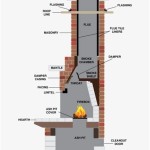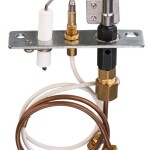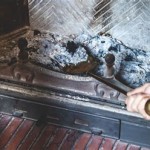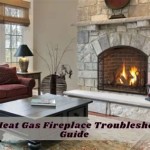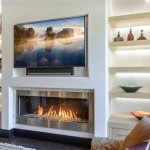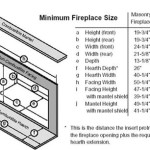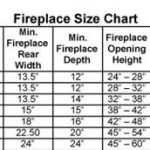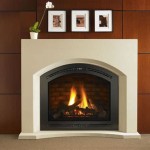Direct Vent Propane Fireplace Installation: A Comprehensive Guide
Direct vent propane fireplaces offer an efficient and aesthetically pleasing heating solution for residential and commercial spaces. These fireplaces provide warmth and ambiance while minimizing heat loss and ensuring safe operation. Understanding the intricacies of direct vent propane fireplace installation is crucial for ensuring optimal performance, longevity, and safety. This article provides a detailed overview of the installation process, highlighting key considerations and best practices for successfully integrating a direct vent propane fireplace into a property.
Direct vent systems are characterized by their sealed combustion chamber, which draws air from outside the building and vents exhaust gases directly to the exterior via a coaxial or concentric vent pipe. This design eliminates the need for a traditional chimney and reduces the risk of backdrafts or carbon monoxide poisoning. The closed system also contributes to improved energy efficiency, as it prevents heated indoor air from escaping through the venting system.
Before commencing any installation work, it is imperative to consult local building codes and regulations related to propane appliances. These codes dictate specific requirements for venting, clearances to combustible materials, gas line connections, and safety features. Failure to comply with these regulations can result in fines, delays, and potentially dangerous situations. It is advisable to obtain the necessary permits prior to starting the installation.
1. Planning and Preparation: Laying the Foundation for a Successful Installation
The initial phase of the installation process involves meticulous planning and preparation to ensure a smooth and efficient workflow. This stage encompasses several critical steps, including selecting an appropriate fireplace model, determining the optimal location, and preparing the installation site.
The selection of a direct vent propane fireplace should be based on several factors, including the desired heat output (measured in BTUs), the size of the space to be heated, the aesthetic preferences of the homeowner, and the available space for installation. It is crucial to choose a fireplace that is appropriately sized for the room to avoid overheating or inadequate heating. The manufacturer's specifications should be carefully reviewed to ensure compatibility with the intended application.
Determining the optimal location for the fireplace is another key consideration. The fireplace should be positioned in a location that maximizes heat distribution and enhances the aesthetic appeal of the room. Factors to consider include proximity to seating areas, visibility from different vantage points, and the availability of a suitable venting pathway to the exterior. The location should also comply with minimum clearance requirements to combustible materials, as specified by the manufacturer and local building codes.
Preparing the installation site involves ensuring that the area is clean, level, and free from obstructions. The flooring should be protected with drop cloths or other suitable materials to prevent damage during the installation process. Any existing fireplaces or heating appliances that are being replaced should be properly disconnected and removed. The wall or framing where the fireplace will be installed may need to be modified to accommodate the unit's dimensions and venting requirements.
A critical aspect of preparation is ensuring that the propane supply line is properly installed and sized to meet the fireplace's gas consumption requirements. This typically involves running a new propane line from the gas meter or propane tank to the fireplace location. The gas line should be installed by a qualified plumber or gas fitter and should comply with all applicable codes and regulations. The gas line should be tested for leaks before connecting it to the fireplace.
2. Venting Installation: Ensuring Safe and Efficient Exhaust
The venting system is a critical component of a direct vent propane fireplace, as it safely channels exhaust gases to the exterior while drawing in fresh air for combustion. Proper venting installation is essential for ensuring safe and efficient operation of the fireplace. The venting system must be installed in accordance with the manufacturer's instructions and applicable building codes.
Direct vent fireplaces typically utilize either a coaxial or concentric venting system. Coaxial venting consists of two separate pipes, one inside the other. The inner pipe carries exhaust gases to the exterior, while the outer pipe draws in fresh air for combustion. Concentric venting features a single pipe with two chambers, one for exhaust and one for intake air. Both types of venting systems are designed to prevent the mixing of exhaust gases and intake air.
The vent pipe must be properly sized and installed to ensure adequate airflow and prevent backdrafts. The manufacturer's specifications will dictate the maximum vent length, the number of allowable elbows, and the minimum vertical rise required for the venting system. Exceeding these limitations can compromise the fireplace's performance and safety.
The vent pipe should be securely connected to the fireplace and to the vent terminal on the exterior of the building. All connections should be sealed with high-temperature sealant to prevent leaks. The vent terminal must be located in a position that is free from obstructions and that complies with minimum clearance requirements to windows, doors, and other openings. The terminal should also be positioned to prevent exhaust gases from re-entering the building.
When routing the vent pipe through walls or ceilings, it is essential to maintain proper clearances to combustible materials. The vent pipe may need to be enclosed in a non-combustible sleeve or chase to provide adequate protection. Firestops should be installed in any openings where the vent pipe passes through walls or ceilings to prevent the spread of fire.
3. Fireplace Installation and Connections: Completing the Setup
Once the venting system is in place, the fireplace can be installed and connected to the gas supply and electrical power, if required. This stage involves carefully following the manufacturer's instructions to ensure that the fireplace is properly positioned, secured, and connected.
The fireplace should be carefully lifted and positioned in the prepared opening. It is important to ensure that the fireplace is level and square before securing it to the wall or framing. Shims may be necessary to level the fireplace on uneven surfaces. The fireplace should be securely fastened to the wall or framing using screws or other appropriate fasteners.
The gas line should be connected to the fireplace using a flexible gas connector or rigid pipe, as specified by the manufacturer. A shutoff valve should be installed in the gas line near the fireplace to allow for easy isolation of the gas supply during maintenance or repairs. The gas connection should be tested for leaks using a soap and water solution. Any leaks should be promptly repaired before proceeding.
If the fireplace requires electrical power for features such as a blower, electronic ignition, or remote control, it should be connected to a dedicated electrical circuit. The electrical connection should be made by a qualified electrician and should comply with all applicable electrical codes. A grounding wire should be connected to the fireplace to ensure proper grounding.
After connecting the gas line and electrical power, the fireplace can be tested to verify proper operation. The pilot light should be lit, and the burner should be ignited. The flame should be observed to ensure that it is burning cleanly and efficiently. The blower and other features should be tested to ensure that they are functioning properly.
Once the fireplace is installed and tested, the surrounding area can be finished to complete the installation. This may involve installing a decorative surround, mantel, or hearth. The finished appearance of the fireplace should blend seamlessly with the surrounding décor and should comply with all applicable building codes and regulations.
Following the successful completion of the installation, it is crucial to provide the homeowner with comprehensive instructions on the safe and proper operation of the fireplace. These instructions should include information on lighting the pilot light, adjusting the flame height, cleaning the fireplace, and troubleshooting common problems. The homeowner should also be advised to schedule regular maintenance inspections by a qualified technician.
In conclusion, installing a direct vent propane fireplace requires careful planning, meticulous execution, and adherence to all applicable codes and regulations. By following the steps outlined in this article and consulting with qualified professionals, homeowners can enjoy the warmth, ambiance, and efficiency of a direct vent propane fireplace for many years to come.

Benefits Of Direct Vent Fireplaces
Understanding How Direct Vent Works Heat Glo

What Are Direct Vent Gas Fireplaces Admiral Propane

What Is A Direct Vent Fireplace Fireplaces Learning Center

Install A Gas Fireplace Framing Finishing Pt 2 Diy Living Room Remodel

Inserts Gas Kingsman Direct Vent Fireplace Insert Millivolt Propane Idv33lp

Empire Premium Tahoe Direct Vent Gas Fireplace 42 Woodland

Freestanding High Efficiency Direct Vent Gas Fireplaces Inserts Stoves Godby Hearth And Home

Empire Tahoe Premium 42 Cf Direct Vent Gas Fireplace Dvcp42bp North Country Fire

Direct Vent Gas Stoves In Dc
Related Posts

